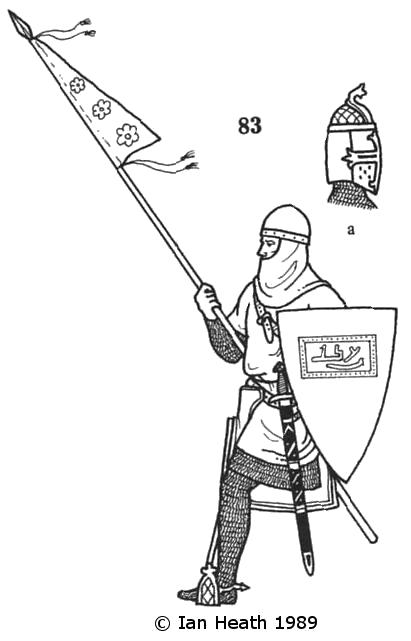
Register a SNAP EBT card with Amazon
GRANADINE HEAVY CAVALRYMAN, MID-13th CENTURY
 An extract from Armies of Feudal Europe 1066-1300
An extract from Armies of Feudal Europe 1066-1300by Ian Heath

 An extract from Armies of Feudal Europe 1066-1300
An extract from Armies of Feudal Europe 1066-130083. GRANADINE HEAVY CAVALRYMAN, MID-13th CENTURY
Horsemen of this type equipped in unmistakably European-style armour and using the higher saddle favoured among their Christian enemies, were first introduced in large numbers by Mohammed I of Granada (1235-73). They adopted the same shock tactics as were employed by Christian Spanish knights but in battle were still backed up by traditional javelin-armed light cavalry. Such heavy cavalry feature frequently in 13th century Spanish sources, notably the 'Cántigas' mss., from which this figure is taken. The surcoat was not always worn, nor the cloth hood (which conceals a mail coif). Some substituted a turban for the coif and helmet, but others resembled Christian knights even more closely (though some at least of the latter are probably in fact Christian mercenaries). Ibn Sa'id's 13th century 'Kitab al-Mugrib' describes the equipment of such Granadine heavy cavalry as full mail armour, heavy shield suspended on the back (presumably of Western European design as shown here, though adargas are also depicted in use by such horsemen in the 'Cántigas' mss.), a 'solid helmet', and a long, heavy thrusting lance with a pennon, Ibn Sa'id adding that each soldier 'had his device by which he could always be recognised' (witness the lance pennons carried by most heavy cavalrymen in the 'Cántiga' mss. where the device is often repeated on helmet and shield). Ibn al-Khatib adds that although armour of the type described above had 'previously' been worn, heavy cavalry of his time (the early-14th century) were equipped with smaller ('short and light') corselets, light helmets, long, slender lances, leather shields and Berber saddles, which he regarded as an improvement. 83a shows a type of barrel-helm worn by some heavy cavalrymen, the high crown presumably designed to accommodate a turban. Others wear normal Western European heaumes. It seems likely that both are forms of the 'Saragossa helmet' mentioned in many sources.